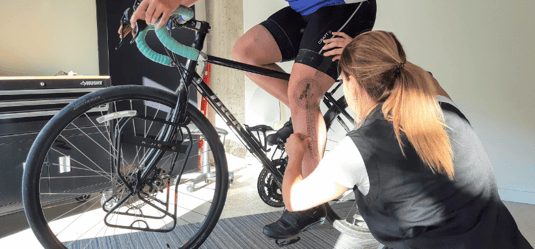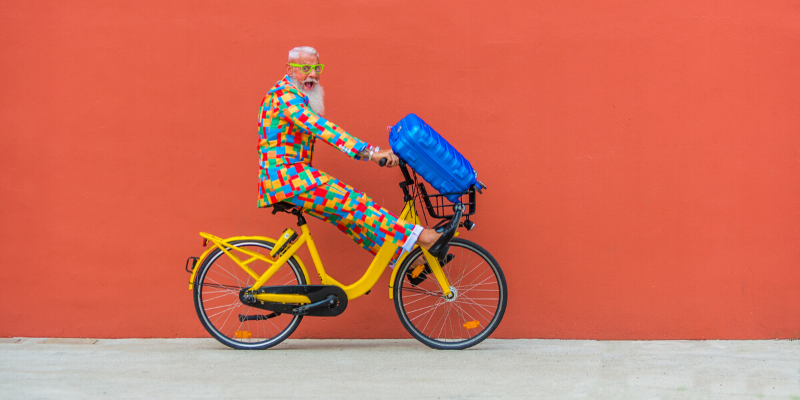
To reduce the risk of injury
Are you loving getting around by bike but want to start heading out for longer rides? Here are a few basic rules to avoid injuring your back, knees, and neck! These 3 quick fixes will reduce your risk of a bike injury.
The seat
The height, tilt, and fore/aft position of the seat all play an important role in protecting your back and knees. If your seat is too high, this can cause your pelvis to sway side to side in an exaggerated manner or your back to curve too much, placing unnecessary stress on the discs in your spine. If your seat is too low, this puts more pressure on your knees, causing you to lose pedalling power. If your seat is tilted toward the handlebars or the rear wheel, this will also affect the position of your back and pelvis. Finally, a seat that is too far forward puts a considerable amount of pressure on your knees, and one that’s too far back affects your ability to pedal properly.
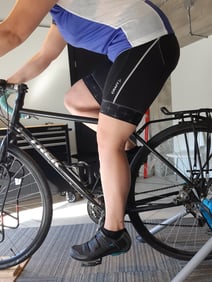
Adjustment needed: Position the pedal at its lowest point and sit on the seat with your hands on the handlebars. With the ball of your foot on the pedal, your knee should be slightly bent (30-35°). For most cyclists, the seat should be horizontal or angled very slightly toward the handlebars.
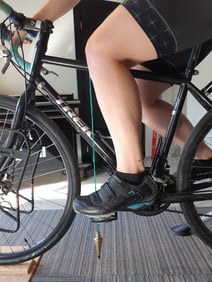
Next, position the crankset horizontally and slightly forward, keeping your hands on the handlebars. The tip of your kneecap should be directly above the pedal axle (part where the pedal attaches to the crank arm). To check this, use a string with a weight tied to one end. Hold the string against the tip of your kneecap and adjust your seat position until the string lines up with the pedal axle.
.
The handlebars
The handlebar height determines the amount of stress on your lumbar spine. The higher the handlebars, the more upright you will sit on the bike, and the more weight you will place on your buttocks. If you’re sitting up too straight, every bump you hit will add to the wear and tear on the discs in your spine. Positioning your handlebars even with or slightly lower than the seat helps to distribute your weight between your upper and lower body, spreading the shocks and vibrations throughout your body and decreasing the amount of stress on your lumbar spine. If this position feels strange to you, it may take some time to get used to it. That’s only normal!
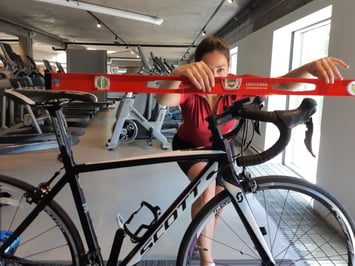
Adjustment needed: Place a level horizontally on the seat, and measure the vertical distance between the level and the handlebars. For recreational riding, position your handlebars 0-50 mm lower than your seat. More experienced athletes should aim for 50-90 mm lower than the seat. The urban position (with the handlebars higher than the seat) is recommended for occasional short rides (under 30 minutes).
The ideal posture
Even once you’ve adjusted everything to a tee, you still need to make a conscious effort to adopt a proper posture and good riding habits to avoid discomfort.
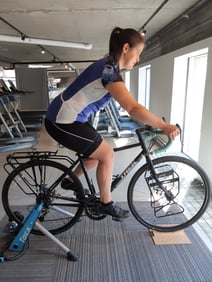
Sit on your bike and ask another cyclist to look at you from the side:
- Is your neck arched?
- Is your lower back rounded?
The goal is to keep your neck straight and your lower back slightly arched. Your elbows should be slightly bent.
Also, varying your grip on the handlebars and straightening your back from time to time helps to redistribute your weight and take a load off your joints. Maintaining any position for too long tends to be painful and irritating. You could also consider taking breaks to straighten up your body.
Last but not least, pat yourself on the back for getting active! With these extra precautions, the odds of a smooth, pain-free bike ride are largely in your favour.
Have fun... and don’t forget your helmet!
Did you know? We offer an assessment and bike fitting service for cyclists of all levels.
Need to talk to a professional?
Other articles that might interest you...

Tips for reducing morning soreness
How to improve your sleeping position When you feel pain, it’s normal to want to look for the...
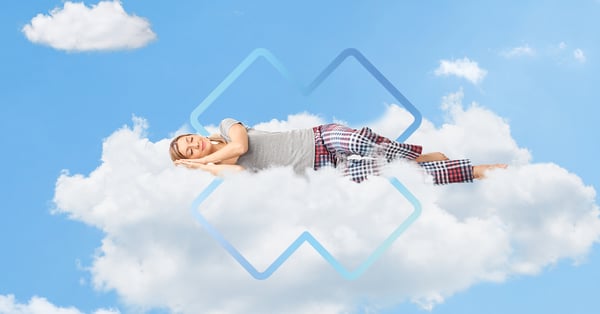
The Best Sleeping Position for Pain-Free Nights
Do you experience back or neck pain? Do you wake up feeling sore? Have you considered checking your...

What is lower back pain?
Everything you need to know about lumbar (lower back) pain Lumbar (or lower back) pain is a very...
 Home
Home
